
How to Use 7.4v: Examples, Pinouts, and Specs
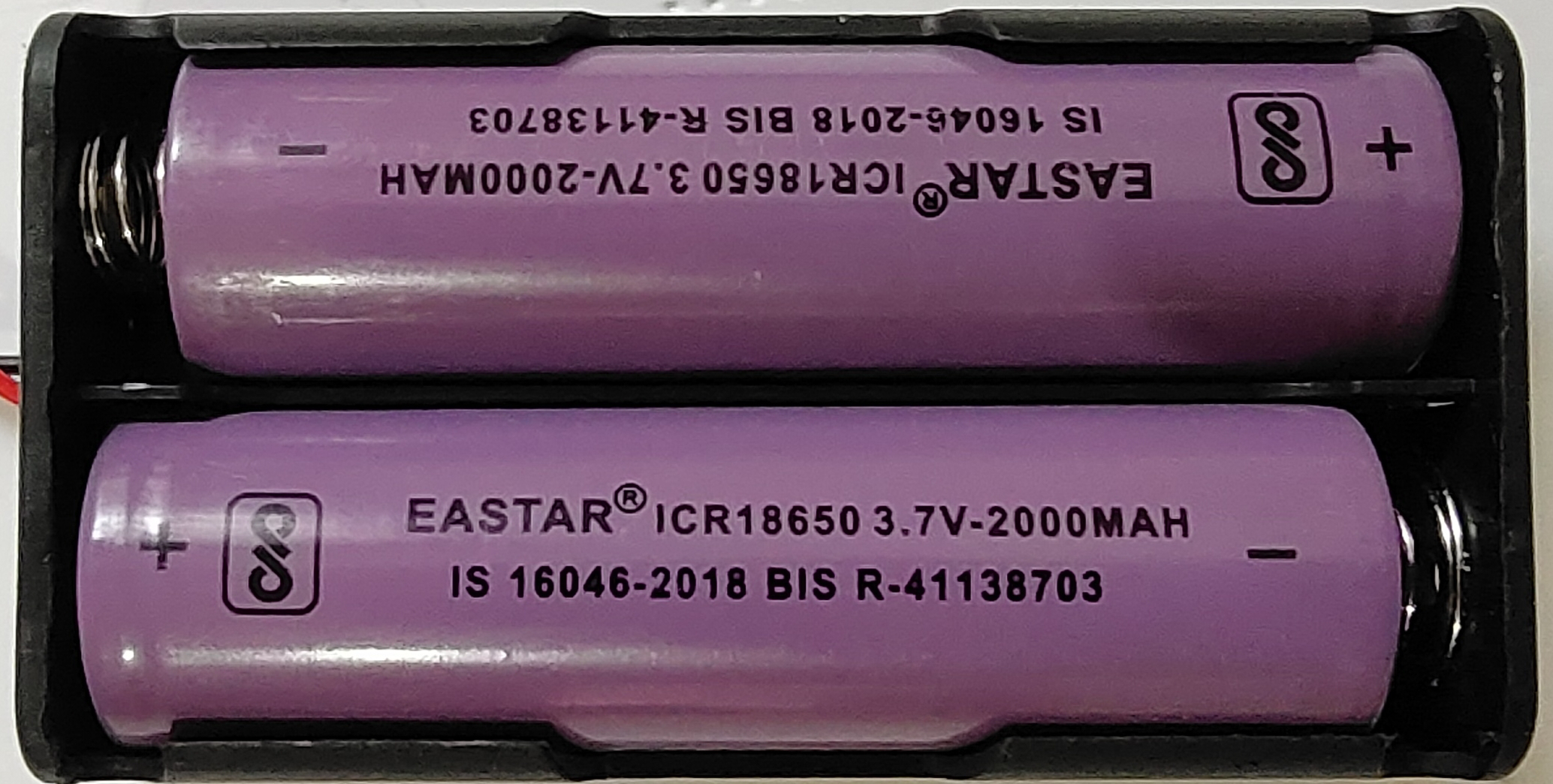
 Design with 7.4v in Cirkit Designer
Design with 7.4v in Cirkit DesignerIntroduction
The 7.4V Lithium Polymer (LiPo) battery is a rechargeable power source commonly used in a wide range of electronic applications due to its high energy density and lightweight characteristics. These batteries are often found in remote-controlled vehicles, drones, portable electronics, and can also be used to power microcontroller platforms such as the Arduino UNO for mobile projects.
Explore Projects Built with 7.4v
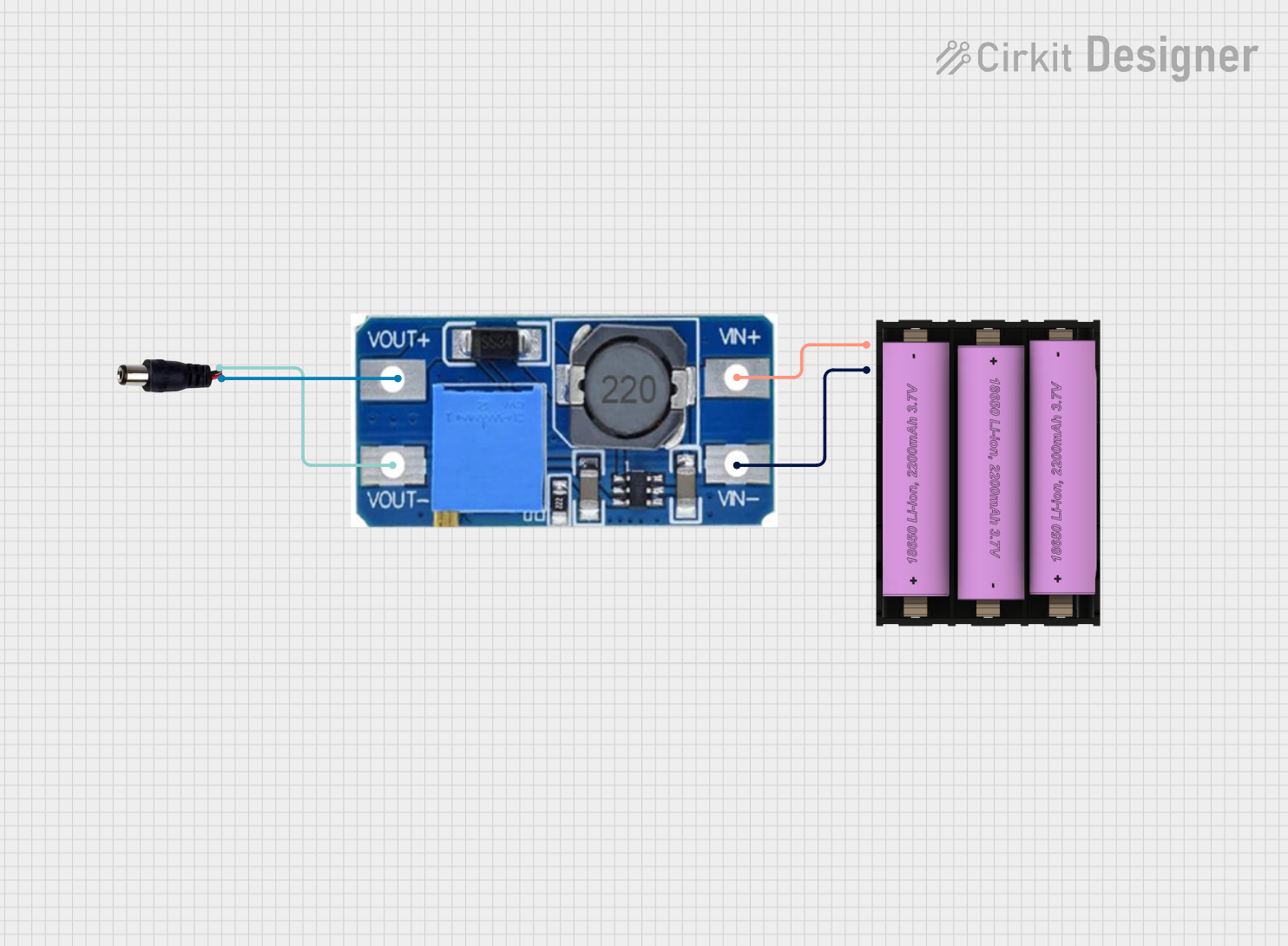
 Open Project in Cirkit Designer
Open Project in Cirkit Designer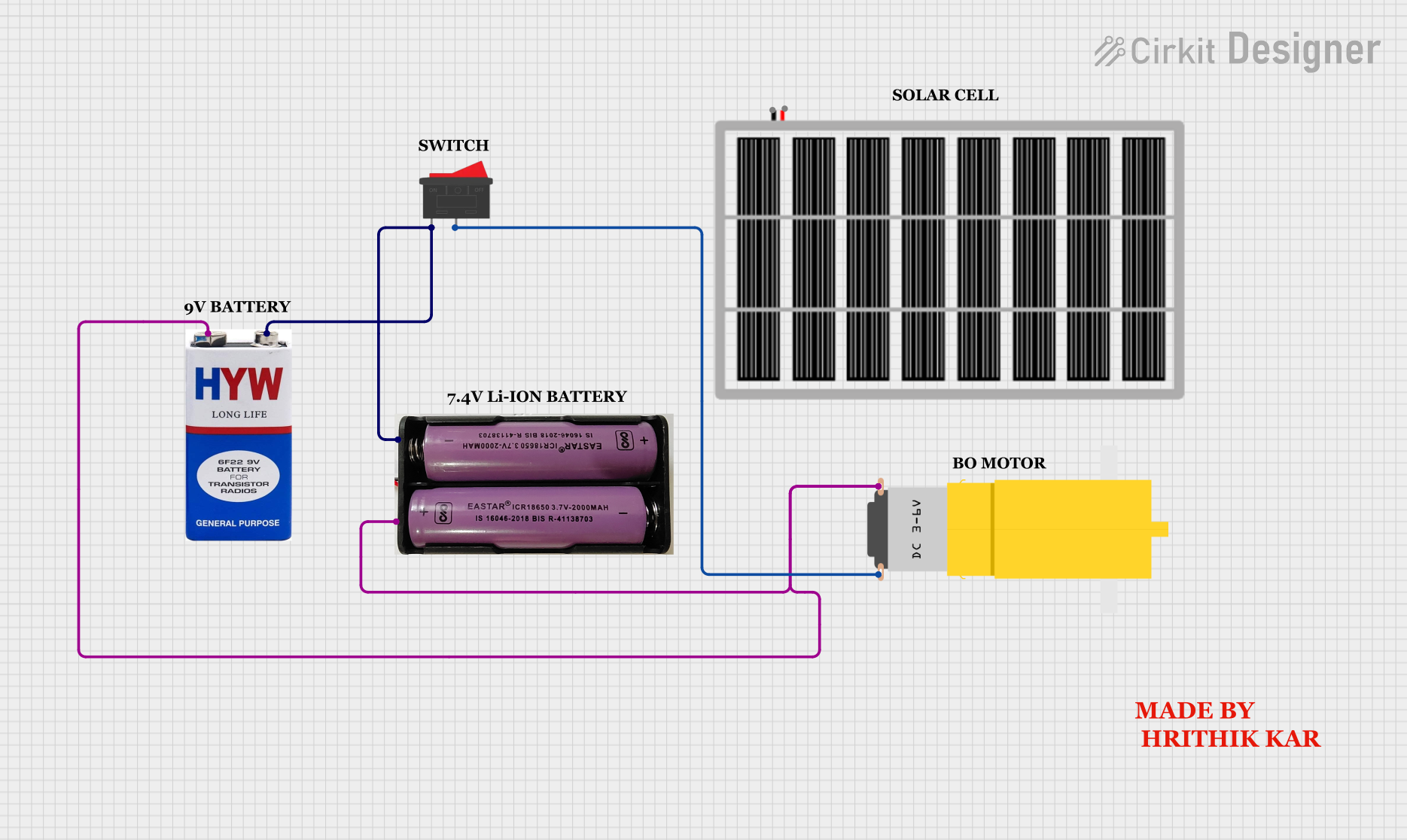
 Open Project in Cirkit Designer
Open Project in Cirkit Designer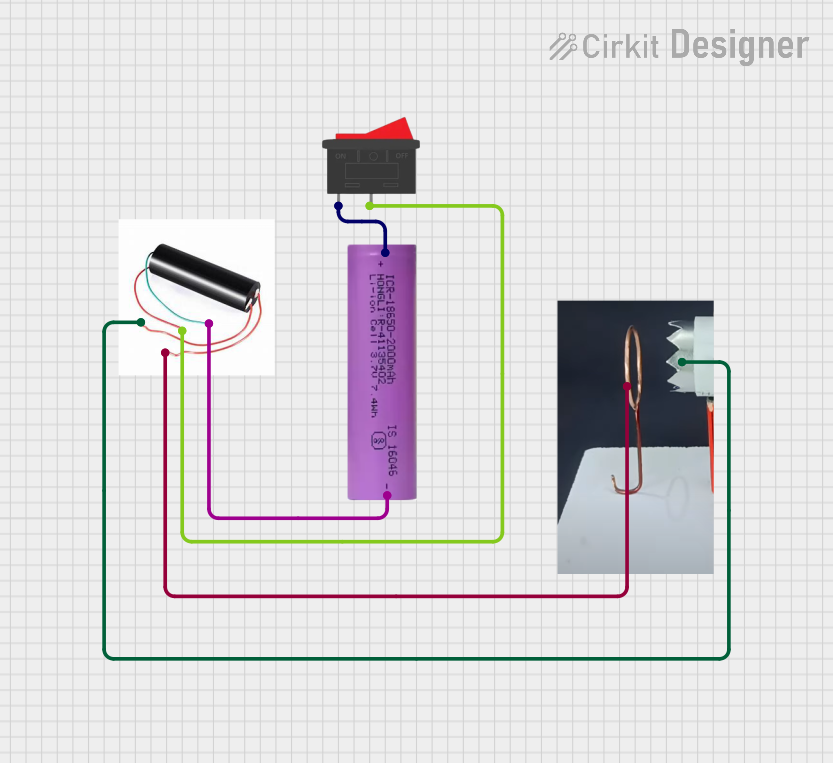
 Open Project in Cirkit Designer
Open Project in Cirkit Designer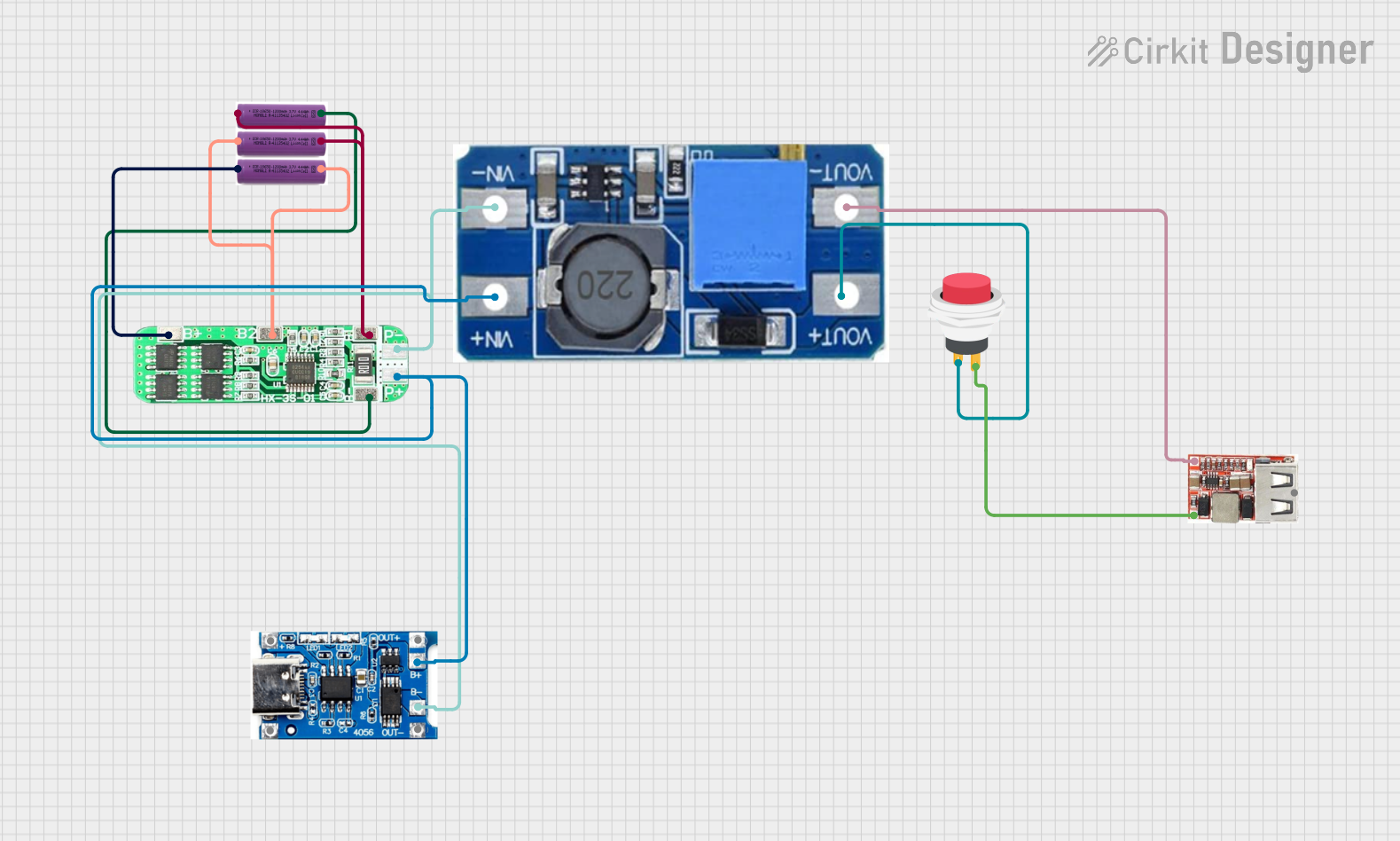
 Open Project in Cirkit Designer
Open Project in Cirkit DesignerExplore Projects Built with 7.4v

 Open Project in Cirkit Designer
Open Project in Cirkit Designer
 Open Project in Cirkit Designer
Open Project in Cirkit Designer
 Open Project in Cirkit Designer
Open Project in Cirkit Designer
 Open Project in Cirkit Designer
Open Project in Cirkit DesignerTechnical Specifications
Key Technical Details
- Nominal Voltage: 7.4V
- Fully Charged Voltage: 8.4V
- Discharge Cut-off Voltage: 6.0V
- Capacity: Typically ranges from 500mAh to 5000mAh (varies by model)
- Max Continuous Discharge Rate: Varies by model (expressed in C-rating, e.g., 20C)
- Max Charge Rate: Varies by model (expressed in C-rating, e.g., 2C)
- Chemistry: Lithium Polymer
- Connector Type: Often JST, XT60, or Deans connectors (varies by model)
Pin Configuration and Descriptions
| Pin Number | Description | Notes |
|---|---|---|
| 1 | Positive (+) Terminal | Typically marked with red color |
| 2 | Negative (-) Terminal | Typically marked with black color |
Usage Instructions
Integrating with a Circuit
Voltage Regulation: Ensure that the voltage of the LiPo battery is compatible with the device it is powering. If the device requires a lower voltage, use a voltage regulator or buck converter to step down the voltage.
Connector Compatibility: Use a compatible connector or adapter to connect the battery to the circuit. Ensure polarity is correct to prevent damage.
Charging: Only use a charger specifically designed for LiPo batteries. Incorrect charging can lead to battery damage or fire.
Storage: Store the battery at approximately 50% charge in a cool, dry place when not in use.
Best Practices
- Monitoring: Always monitor the battery voltage to prevent over-discharge. Use a low voltage alarm or cutoff circuit.
- Safety: Never puncture, crush, or expose the battery to extreme temperatures or water.
- Disposal: Follow local regulations for the disposal of LiPo batteries. Do not throw them in regular trash.
Example: Connecting a 7.4V LiPo to an Arduino UNO
// This example assumes the use of a voltage regulator to step down
// the voltage from 7.4V to a safe level for the Arduino UNO (5V).
#include <Arduino.h>
void setup() {
// Initialize the serial communication at 9600 baud rate.
Serial.begin(9600);
}
void loop() {
// The Arduino is powered by the 7.4V LiPo through a voltage regulator.
// The code below would be your typical loop code.
Serial.println("The Arduino UNO is running on LiPo power!");
delay(1000); // Wait for 1 second before repeating the loop.
}
Troubleshooting and FAQs
Common Issues
- Battery won't charge: Ensure the charger is a LiPo-compatible charger and that the connections are secure.
- Reduced runtime: The battery may be nearing the end of its life cycle or may not be fully charged.
- Swollen battery: Discontinue use immediately. A swollen battery is a sign of damage and can be dangerous.
Solutions and Tips
- Battery won't charge: Check the charger and battery connections. If the issue persists, the battery or charger may be faulty.
- Reduced runtime: Perform a few charge/discharge cycles. If performance does not improve, consider replacing the battery.
- Swollen battery: Safely dispose of the swollen battery at an appropriate facility.
FAQs
Q: Can I charge a 7.4V LiPo battery with a regular Li-ion charger? A: No, you must use a charger specifically designed for LiPo batteries to ensure safe and proper charging.
Q: How do I know when my LiPo battery is fully charged? A: A LiPo-compatible charger will typically indicate when the battery is fully charged. The voltage per cell should not exceed 4.2V.
Q: What should I do if my LiPo battery gets wet? A: Immediately disconnect the battery, place it in a safe area away from flammable materials, and allow it to dry completely. If the battery shows any signs of damage, dispose of it properly.
Q: How long can I store my LiPo battery without using it? A: LiPo batteries can be stored for months, provided they are stored at the correct storage voltage (approximately 3.8V per cell) and in a cool, dry place. Check the battery periodically and recharge to storage voltage if necessary.